What is a tunable white downlight
A tunable white downlight is a spectrally adjustable luminaire that allows users to modulate the color temperature of white light. Tunable white lighting adds a new dimension to dynamic lighting. It is designed to optimize the spectral composition of white light such that the right amount of energy is emitted at the desired wavelengths of the visible spectrum. The spectral power distribution (SPD) of a light source determines its color characteristics which affect the color of light and color of objects.
The color appearance of white light is indicated by its color temperature or correlated color temperature (CCT) which is intended to characterize the color of light emitted by light sources other than incandescent radiators. This color metric system is designed to provide intuitive information about the perceptual effect of white light in the mind of the viewer. The lower the color temperature, the warmer the white light appears; the higher the color temperature, the cooler the white light appears. Whether the light is warm or cool in appearance is inherently dictated by its SPD. Warm white light is heavily laden with energy at red and orange wavelengths. Blue-enriched light appears cooler. Neutral white light has a balanced ratio between blue and red light in its spectrum.
The science behind the color of light
Dynamic control of the emitted spectrum allows color perception to be flexibly adapted to the intended use of a space thereby contributing to an optimal mood, ambiance, and atmosphere. Warmer white ambiance is often described as intimate, cozy, and residential. Cooler white light creates a feeling of openness and gives a space an institutional look. However, tunable white downlights are not simply designed to adjust the luminous environment for improved visual perception. Optical radiation reaching the retina not only impacts visual sensation and subjective assessment of an interior space, but it also has effects on a range of neuroendocrine and neurobehavioral responses controlled by our biological (“circadian”) clocks.
During the process of human evolution, a system of internal clocks developed under the influence of predictable environmental changes occurring on both an annual and a daily basis. These internal clocks drive biological rhythms in physiology and behavior to ensure they are appropriately coordinated with the environmental cycle and each other. The biological rhythms that repeat approximately every 24 hours are called circadian rhythms. A wide variety of physiological and behavioral events exhibit circadian rhythmicity, which include hormone production, eating habits, urine production, body temperature, bowel movements, sleep/wake cycles, gene expression, etc.
Circadian synchronization
Circadian rhythms need to be constantly synchronized to the environment for coordinated function throughout the human body. The major environmental cue for setting these endogenous biological cycles is the light/dark cycles of the 24-hour day. Circadian entrainment to the light/dark cycles is controlled by the suprachiasmatic nucleus (SCN) contained within the hypothalamus region of the brain. The SCN is a self-sustaining oscillator that acts as the body’s master clock. The master clock coordinates and synchronizes all peripheral clocks located in various organs and tissues including liver, lung, muscle and kidney.
In absence of the SCN peripheral clocks are not able to retain synchrony externally with the 24-hour cycle of day and night or internally with each other. The SCN responds to light and dark signals through a phototransduction mechanism. While the classical photoreceptors in the retina, i.e., rods and cones, participate in circadian phototransduction, intrinsically photosensitive retinal ganglion cells (ipRGCs) are central to this process. The ipRGCs integrate photic input from a large area of the retina and transmit information about overall environmental irradiance via the retino-hypothalamic tract (RHT) directly to the SCN.
The biological influence from light
Via circadian phototransduction, the light/dark cycle regulates the timing of various biological parameters. It resets our internal biological clocks, which do not run at exactly 24 hours, on a daily basis. It is of vital importance to provide appropriate environmental cues via optical radiation to synchronize the master biological clock to the 24-hour rhythm of the ambient changes. When environmental conditions are not kept constant, circadian rhythms become desynchronized with the 24-hour cycle of day and night. When the timing of the master circadian clock in the brain is disrupted, the peripheral clocks are desynchronized as well since rhythmicity in these clocks is driven and sustained by the master clock. The master block or SCN also acts a peripheral-clock coordinator which entrains the peripheral clocks to an appropriate phase to each other and the external environment.
A master biological clock out of sync with the natural environment therefore can cause internal desynchronization between the peripheral clocks. Disruption of circadian rhythms can lead to a cascade of negative health effects including increased cardiovascular diseases, disruption of endocrine functions, decline of immune functions and cognitive impairment. The most noticeable impact of the circadian disruption is the suppression and secretion of melatonin produced in the pineal gland. Melatonin acts as a transmitter that travels in the bloodstream throughout the body. It conveys information about the photoperiod to the circadian clock. Nocturnal melatonin suppression disrupts the quality of sleep, affect cell metabolism and proliferation, and is associated with increased cancer risks. In addition to the physiological impacts, a disrupted circadian cycle can result in psychological consequences such as depression, mood disorders, increased stress and heightened anxiety.
Brings the dynamics of natural daylight indoors
Tunable white LED downlights are used in human centric lighting (HCL) applications which strive to adapt interior lighting over the entire course of the day to the dynamics of exterior daylight with regard to luminance and light color. Throughout the day, changing illuminance and spectrum of daylight signal the SCN to activate hormonal and other pathways critical to health and performance. However, as people nowadays spend most of their time working and living indoors, they hardly get any daylight. Traditional electric lighting is fixed at the same spectrum and intensity regardless of activity or time of day, which fails to reproduce the dynamics of daylight with which our circadian rhythm is hardwired.
The ipRGCs, which form the main neural pathway from the retina to the SCN, have a peak spectral sensitivity at around 460 nanometers (nm). As the sun rises in the morning, a gradual increase of light intensity and the blue content in the spectrum triggers the master biological clock to suppress the secretion of melatonin and activate a daytime physiological state. As the day progresses through afternoon and evening, both the light intensity and blue content decline. The absence or very low levels of bioactive blue light provides a night signal that prompts the master clock to release melatonin for restorative sleep. To reproduce the ambient changes of the natural environment, interior lighting systems must provide the ability to flexibly tailor the spectrum and intensity to the biological needs of room occupants.
Tunable white lighting
The full range, high precision dimmability as well as the availability of component LEDs in various monochromatic colors and CCTs makes it possible to create additive color systems that deliver spectral power distribution (SPD) that is engineered to engage specific human visual and non-visual responses. A tunable white downlight is a color-mixing LED system that use two or more controllable LED channels to provide a continuously adjustable range of color temperatures from warm white (usually around 2700K) to cool white LEDs (usually around 6000 K). The LED downlight is designed to allow independent control of both color temperature and intensity of light, which means within the gamut any color temperature at any intensity can be achieved.
The tunable white LED module uses at least two LED primaries—warm white LEDs and cool white LEDs. It can also be designed as RGBW full-color tuning systems that can produce a full spectrum of precisely controllable light. The LED module is usually a mixture of mid-power SMD LEDs. Tunable white LED modules are also available as integrated chip-on-board (COB) LED arrays that simplify circuit design and boast excellent beam uniformity. With accurate dimming on each channel through pulse-width modulation (PWM) or constant current reduction (CCR), the chromaticity coordinates of the whites within the gamut can be set precisely along with the Planckian locus. Each LED channel can be controlled through 0-10V, DALI, DMX or a wireless protocol.

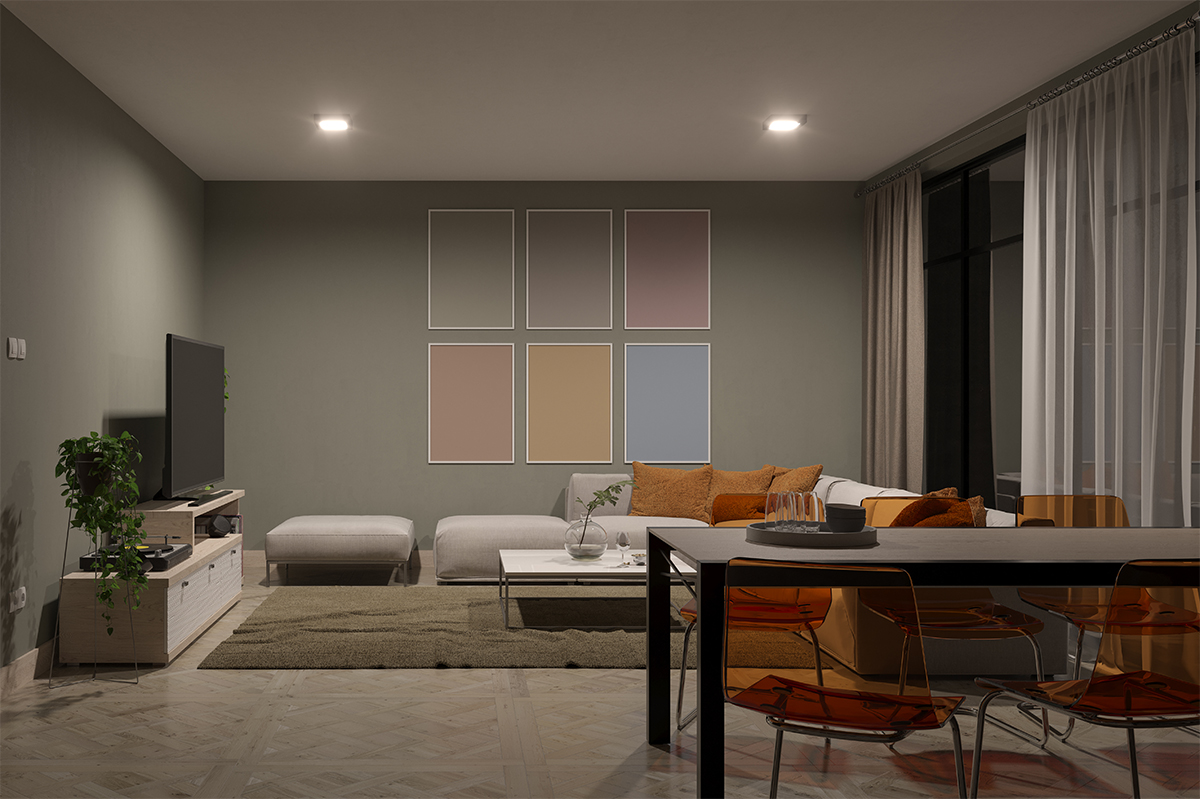


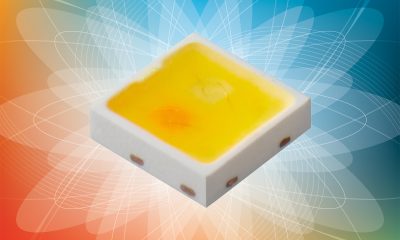
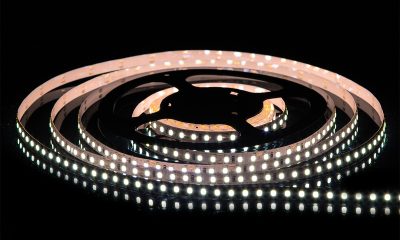
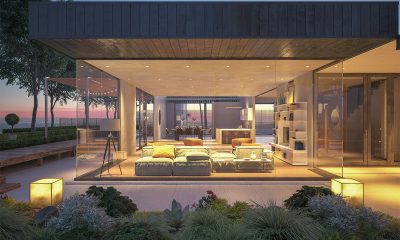




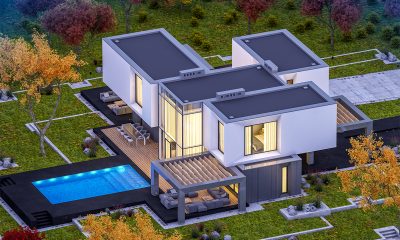







Loading...